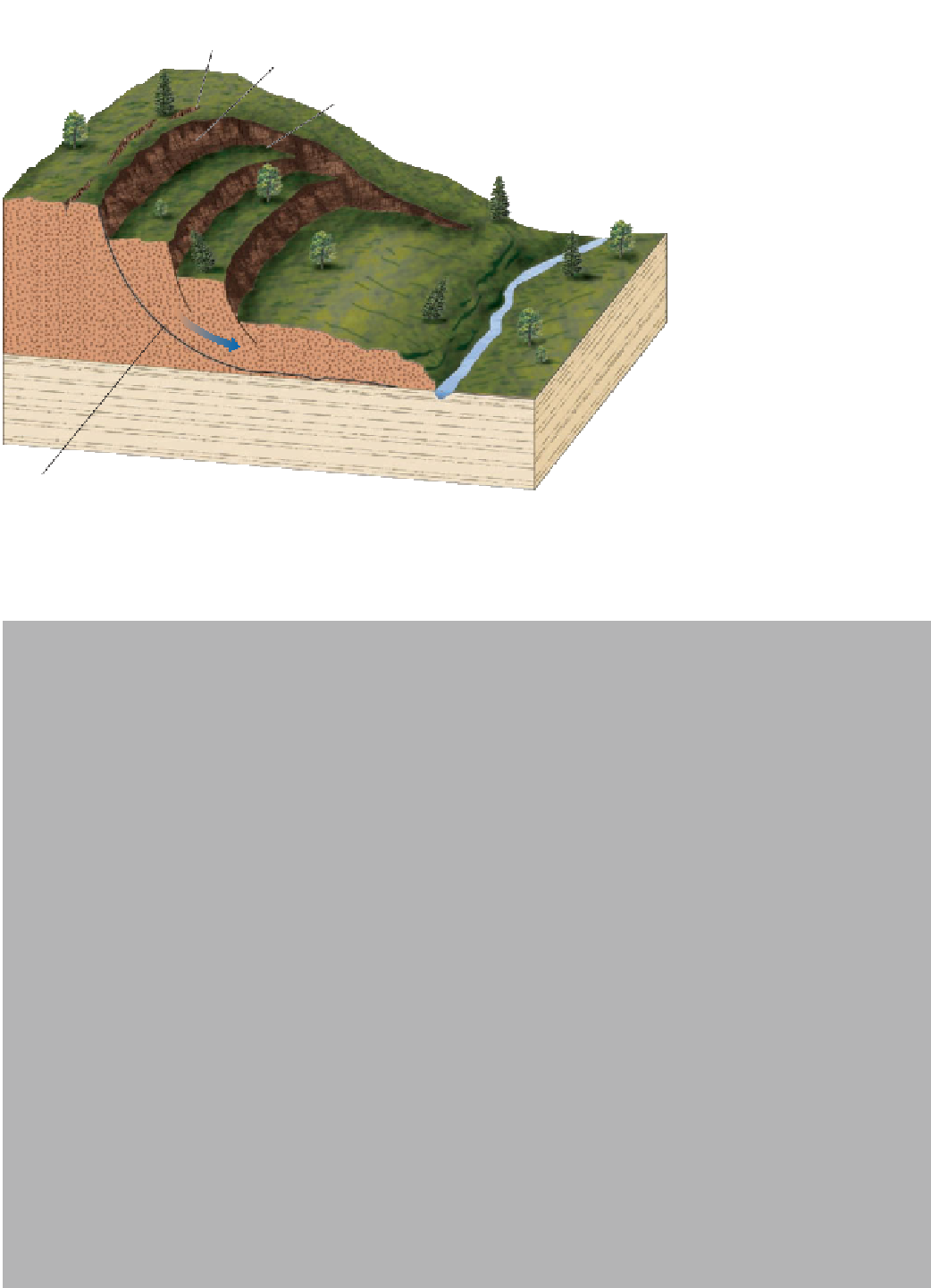Geology Reference
In-Depth Information
Slope oversteepening can also be
caused by human activity, such as
the construction of highways and
housing developments. Slumps are
particularly prevalent along high-
way cuts, where they are generally
the most frequent type of slope
failure observed.
Although many slumps are
merely a nuisance, large-scale
slumps in populated areas and
along highways can cause exten-
sive damage. Such is the case in
coastal southern California where
slumping and sliding have been a
constant problem, resulting in the
destruction of many homes and
the closing and relocation of nu-
merous roads and highways (see
Geo-Focus on pages 282 and 283).
A
rock
or
block
slide
occurs
when rocks move downslope along
a more or less planar surface. Most
Fractures
Scarp
Slump block
Surface of rupture
◗
Figure 11.9
Slumping In a slump, material moves downward along the curved surface of a
rupture, causing the slump block to rotate backward. Most slumps involve unconsolidated or
weakly consolidated material and are typically caused by erosion along the slope's base.
Image not available due to copyright restrictions

Search WWH ::

Custom Search